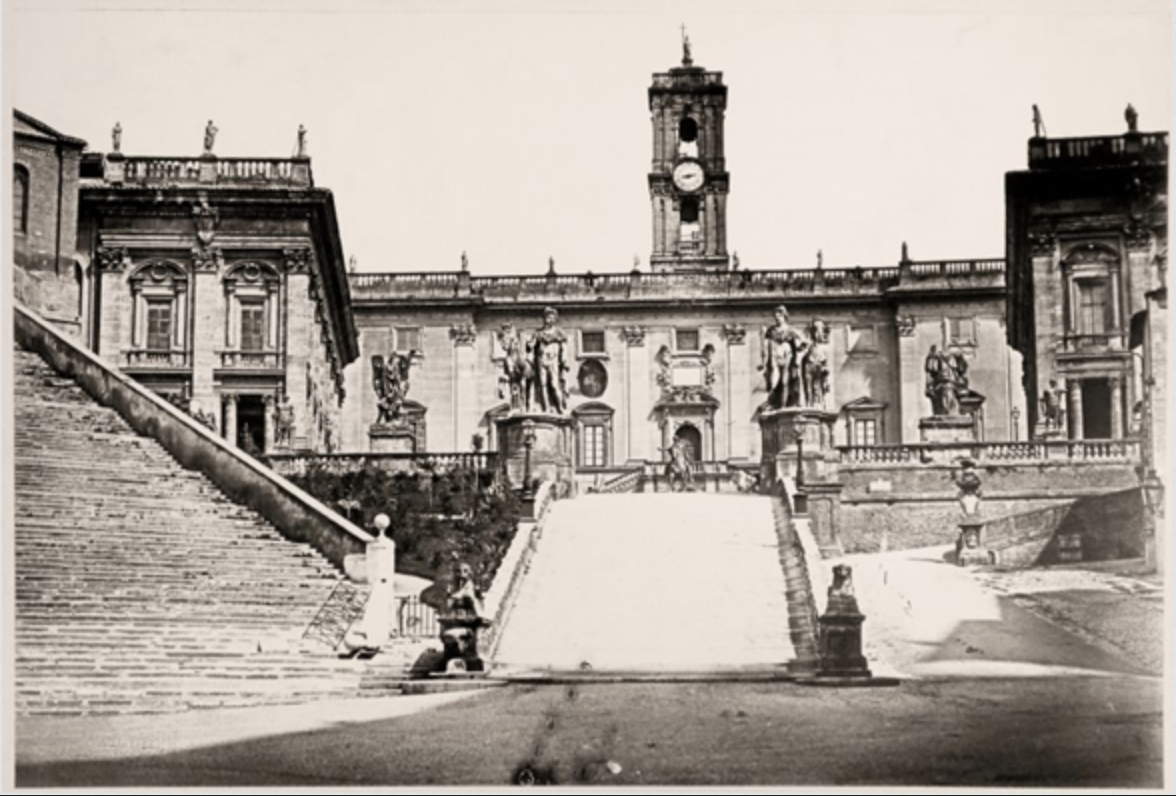Created by Stacey Smythe on Tue, 04/27/2021 - 11:18
Description:
The Piazza del Campidoglio (on top of the Campitoline Hill, one of the seven hills of Rome) includes such statues as Castor and Pollux perched atop pedestals at the head of the Cordonata (ramp) and to either side of the entrance to the piazza; the Trophies of Marius flanking the Discouri; and a replica of the 2nd century CE bronze equestrian statue of Marcus Aurelius situated at its center. Here, one can also find the Musei Capitolini (Capitoline Museums—the cluster of buildings that circumscribe the trapezoidal-shaped piazza on the Capitoline Hill, the geographical and ceremonial center of Ancient Rome). The buildings constitute the oldest public collection of art in the world and boasts an impressive and sizable assemblage of Roman iterations of Greek masterpieces. Although not officially opened to the public until 1734 by Pope Clement XII, the collection was inaugurated with Pope Sixtus IV’s 1471 donation to the citizens of Rome of four historically and civically significant bronzes: Spinario (Boy with Thorn), the Camillus, a fragment of the Colossal Head of Constantine, and the She-wolf/Capitoline Wolf, the last of which—the image of the she-wolf suckling Romulus and Remus, the legendary founders of Rome—has been a symbol of Rome since antiquity. Originally housed in the Lateran Palace—and eventually permanently installed in the Palazzo Nuovo—the pieces were relocated to the Palazzo dei Conservatori, the seat of local government built in the in the late Middle Ages, and one of the two existing civic buildings by which the site was circumscribed in the16th century, and around which Michelangelo redesigned the piazza. Pope Paul III in 1536, ordered that the dilapidated, squalid, and long-neglected area be converted into an imposing square stamped with the Papal imprint. Michelangelo reoriented the compound so as to no longer face the Forum as it had in antiquity, but to face west toward St. Peter’s, the Christian counterpart to, and equivalent of the municipal capitol. The balustrades which run the length of the palazzi rooftops—and which visually and thematically unite the façades of the three buildings—are punctuated with a series of ancient sculptures aligned with the corresponding pilasters below them. Gian Lorenzo Bernini may have drawn inspiration from Michelangelo’s ornamentation for the design of his statue-studded colonnade of St. Peter’s—echoing and emulating his Renaissance predecessor, but in exaggerated Baroque fashion.
Copyright:
Associated Place(s)
Part of Group:
Featured in Exhibit:
Artist:
- Robert MacPherson


